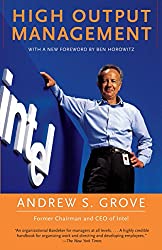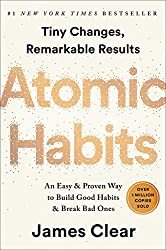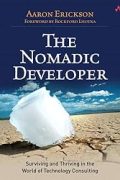
Rating: 7.9/10.
Book about the principles of management, written by the former CEO of Intel. It begins with a toy example production process of a restaurant preparing breakfast meals. The first essential principle is to organize the process around the limiting step, which is the step that takes the most time. For instance, in the breakfast factory, if cooking the eggs consumes the most time, everything else should be organized around this step. Trade-offs can be made with equipment, manpower, and also the tradeoff between efficiency vs ability to handle unexpected shocks, such as failures or surges in demand.
Another principle is it’s important to detect problems as early in the process as possible, as it reduces the cost of fixing them. A recommended strategy is to inspect a proportion of the output at each step of the process, allowing you to identify issues early. Every morning, the manager looks at essential indicators in your factory to identify any potential issues and take preemptive measures to resolve them. Changes often require time to take effect, so it is crucial to stay ahead of the curve and initiate processes, such as building or ordering supplies in advance.
The manager has three important duties: gathering information, nudging people, and making decisions. While the manager’s purpose is not to attend meetings, it often happens that these tasks are best done during meetings. Aim to have high leverage by taking actions that impact a significant number of people simultaneously; equally important is avoiding negative leverage by being unprepared for meetings and wasting people’s time, or being indecisive and hindering progress on clarifying decisions. It is generally advisable for a manager to have between 6 to 8 direct reports, as managing each direct report typically requires approximately half a day’s time. To maximize efficiency, it’s a good idea to allocate solid chunks of time to address smaller tasks, and avoid interruptions throughout the day.
Meetings: one-on-ones are powerful tools that should be done regularly. They are the best way to obtain information from subordinates, allow them to present problems to the manager, while the provides coaching. Other meetings are for reporting statuses or making decisions; it is crucial to make sure these meetings stay on time and are well-organized, and with meetings more than a few people, they can get expensive quickly, so avoid unnecessary attendees. When making decisions, good to start with a free discussion period, where all relevant information (both business and technical factors), are shared with the decision-makers. Ideally, a consensus will emerge at this point, but if a consensus is still not reached, the senior must make a clear decision, and everyone should commit to it once the decision has been made. Planning: figure out what needs to be done before it is needed, then set goals for teams to pursue (while remaining flexible enough that they may deviate from the plan if it makes sense).
As an organization expands from a local to a national operation, a common challenge is figuring out which tasks should be handled locally and which ones should be centralized. Centralizing certain functions can benefit from economies of scale and avoiding each local branches from duplicating the effort, but centralized groups struggle to respond to local conditions, as evidenced by the difficulties of centrally planned economies. Almost always, the organization adopts a hybrid of the two. Dual reporting is useful when the manager lacks sufficient knowledge of all aspects of the report’s work, so have two managers, each responsible for parts of it.
Things can get done in several ways: one way is through market forces, where everyone has the incentive to do something; another is contractual or cultural obligations. Maslow’s hierarchy of needs describes what motivates individuals, the lowest level is physiological needs and the need for income, but beyond that, people are not solely driven by money, but are motivated by self-actualization (the desire to maximize their potential) and competition with others.
The optimal management style depends on the employee’s level of task-relevant expertise. If he has low task-relevant expertise, it’s best to provide more specific directions, but if his expertise surpasses yours, you should focus on communicating goals and monitoring their progress.
Performance reviews are a high-leverage activity and should be conducted regularly. Focus on the output and not necessarily the results achieved because the results may have a time lag, and what actions you’d like them to do to improve their output. This should be done for all employees, including high performers, and not solely focused on low performers. It is a good idea to give written feedback before face-to-face meetings, allowing employees time to process the information and their emotions.
Lastly, it is the company’s responsibility to train employees, instead of relying on employees learning on the job, which can be costly to customer experience. Training falls within the manager’s job role since they possess the most context about what the employee is expected to do.



